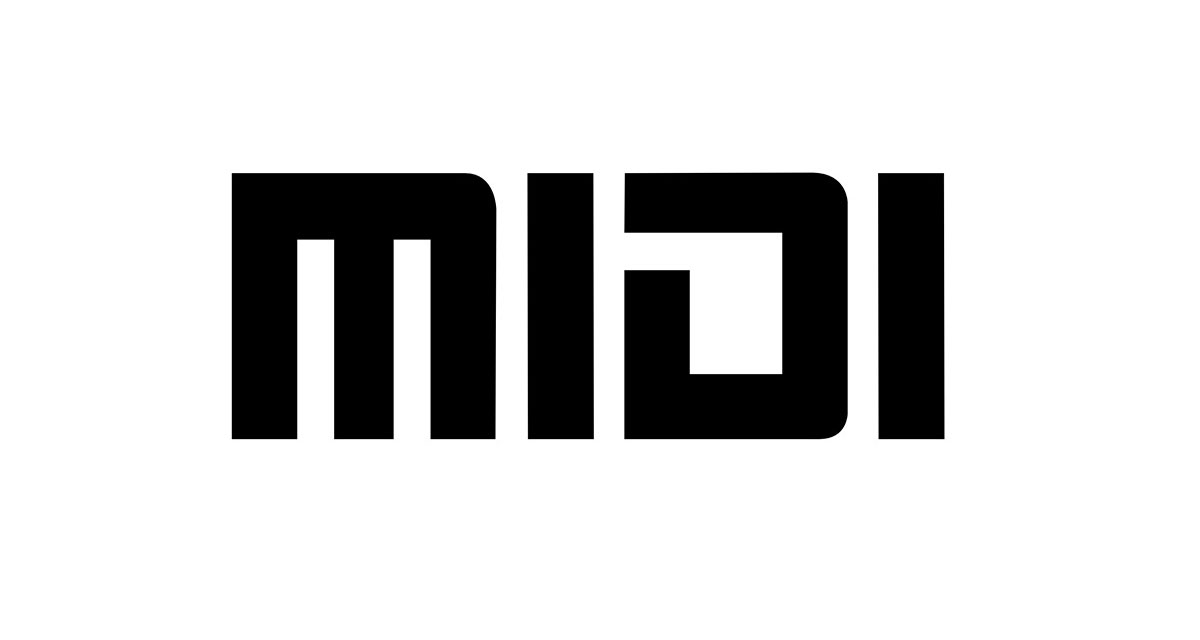MIDI still uses version 1.0, the same version created by Dave Smith’s Sequential Circuits back in the early 80s.
MIDI Still Uses Version 1.0 fact

MIDI 1.0
MIDI (the messaging protocol for musical instruments), despite being standardized in 1983, still uses version 1.0. Unlike almost every other program on earth, the MIDI protocol has never needed an update.[1][2][3][4][5][6][7]
FACT: MIDI is an acronym, it stands for Musical Instrument Digital Interface.
What is MIDI and How Does it Work?
MIDI describes not only the messaging protocol used for instruments to communicate with computers, but also the digital interfaces, software files, and electrical connectors that carry MIDI data.
MIDI allows electronic instruments, computers, and electronic audio devices to send and receive data related to music using MIDI cables.
A common setup might be a MIDI keyboard (a keyboard that can send MIDI data through a MIDI output), connected by a MIDI cable (a cable with links that can carry up to 16 channels of MIDI information), to a computer via a MIDI interface (an interface that allows MIDI data to be read by the computer).
MIDI would be used to capture everything done on the keyboard (every button press or knob turn gets converted into MIDI data), send it through the cable, and into the interface where it could be recorded as a MIDI file on the computer (a MIDI file is a set of instructions with no audio data that a computer can then turn into sound when combined with other software).
That is all enabled by the MIDI 1.0 protocol (and the hardware that carries the signal).
FACT: Sound isn’t sent through MIDI, only digital information is sent.
A History of MIDI.How Does the MIDI Protocol Work?
MIDI uses a hexadecimal (base 16) system to send messages through the 16 prongs of a MIDI cable that correlate with 16 MIDI channels.
Each channel can carry enough information to tell a computer everything it needs to know about a keyboard (note on / off, key pressed, velocity), however other information like pitch bend can take up additional channels.
Or in more specific terms, each channel can carry three bytes of information including one command or status byte (ex. note-on) and two data bytes or parameter bytes (ex. key and velocity). If it is a command byte the 8 bit string starts with a 1, if it is a data byte the 8 bit string starts with a 0.
So, note on, middle C, velocity 101, looks like this in binary 10010000, 01000101, 01100101, or this in hexadecimal 90H, 45H, 65H.
So our message “90H, 45H, 65H” gets sent over one prong of the MIDI cable to the computer, and then the computer has that “sound to play” information.
MIDI Protocol.TIP: A byte is a binary number that contains 8 digits, so each message can carry 8 x 3 = 24 bits of binary information.
The origin of the MIDI Protocol
Dave Smith, founder of the historically important synth company Sequential Circuits, developed MIDI in between 1981 and 1982 (it starts with a paper in 1981, results in a MIDI interface for the Prophet-600 in December 1982).
MIDI was then standardized in 1983 and has since been maintained by the MIDI Manufacturers Association (MMA).
Prior to this there was no standard and each electronic music device or device maker had to re-invent the wheel each time.
Today MIDI is used with almost every electronic instrument and every musical recording (aside from recordings and instruments that are pure analog).
Dave Smith on MIDI.- MIDI 1.0. Wikipedia.org.
- MIDI. Wikipedia.org.
- 30 years of MIDI: a brief history. MusicRadar.com.
- The MIDI Protocol. MusicRadar.com.
- Essentials of the MIDI protocol. Ccrma.stanford.edu
- MIDI status & data bytes. PlanetofTunes.com.
- Craig Anderton’s Brief History Of MIDI. Midi.org.
